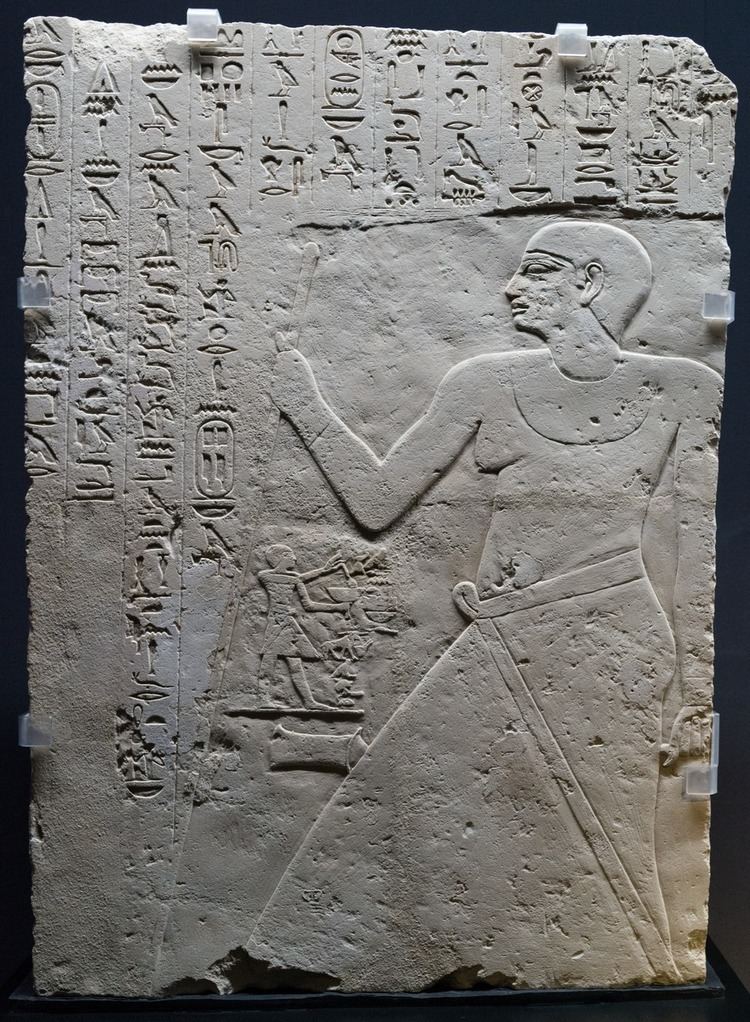 | ||
The Sixth Dynasty of ancient Egypt (notated Dynasty VI) along with Dynasties III, IV and V constitute the Old Kingdom of Dynastic Egypt.
Contents
Pharaohs
Known pharaohs of the Sixth Dynasty are as follows (the absolute dates given are suggestions rather than facts, as the error margin amounts to tens of years) The pharaohs of this dynasty ruled for approximately 164 years. The Horus names and names of the Queens are taken from Dodson and Hilton.
Dynasty VI is considered by many authorities as the last dynasty of the Old Kingdom, although The Oxford History of Ancient Egypt includes Dynasties VII and VIII as part of the Old Kingdom. Manetho writes that these kings ruled from Memphis, since their pyramids were built at Saqqara, very close one to another.
Teti
Dynasty VI was founded by Teti, who had married Iput, commonly believed to be the daughter of the Dynasty V pharaoh Unas. Manetho claimed that Teti was eventually murdered by his own bodyguard, but no contemporary sources confirm this.
Pepi I
During this dynasty, expeditions were sent to Wadi Maghara in the Sinai Peninsula to mine for turquoise and copper, as well as to the mines at Hatnub and Wadi Hammamat. The pharaoh Djedkara sent trade expeditions south to Punt and north to Byblos, and Pepi I sent expeditions not only to these locations, but also as far as Ebla in modern-day Syria.
Pepi II
The most notable member of this dynasty was Pepi II, who is credited with a reign of 94 years, one of the longest of any monarch in history.
Nitiqret
Also known by the Greek name Nitocris, this woman is believed by some authorities to have been not only the first female pharaoh but the first queen in the world, although it is currently accepted that her name is actually a mistranslation of the king Neitiqerty Siptah.
The rise of the nobility
With the growing number of biographical inscriptions in non-royal tombs, our knowledge of the contemporary history broadens. For example, we hear of an unsuccessful plot against Pepi I. We also read a letter written by the young king Pepi II, excited that one of his expeditions will return with a dancing pygmy from the land of Yam, located to the south of Nubia.
These non-royal tomb inscriptions are but one example of the growing power of the nobility, which further weakened the absolute rule of the king. As a result, it is believed that on the death of the long-lived Pepi II his vassals were entrenched enough to resist the authority of his many successors, which may have contributed to the rapid decline of the Old Kingdom.
